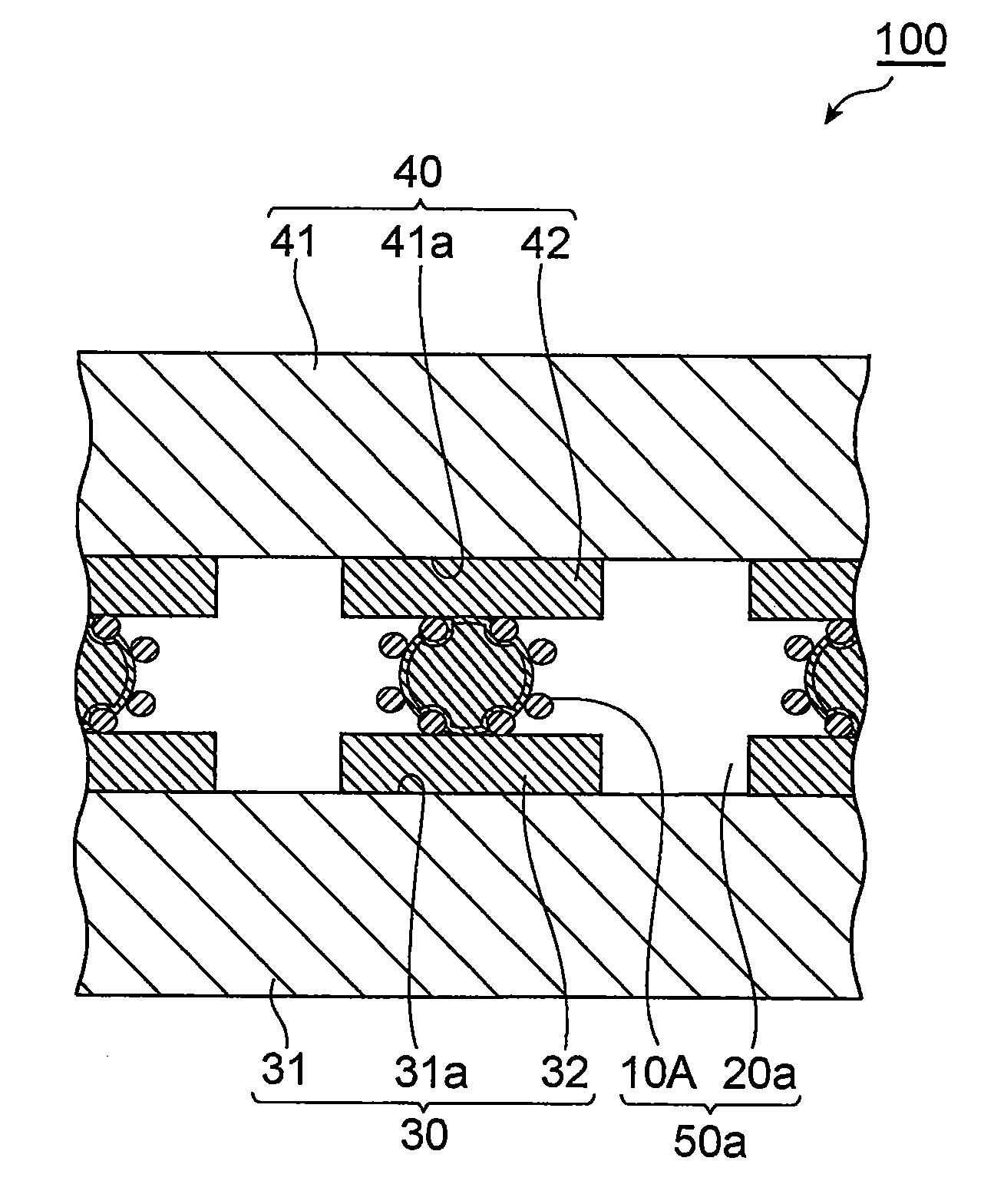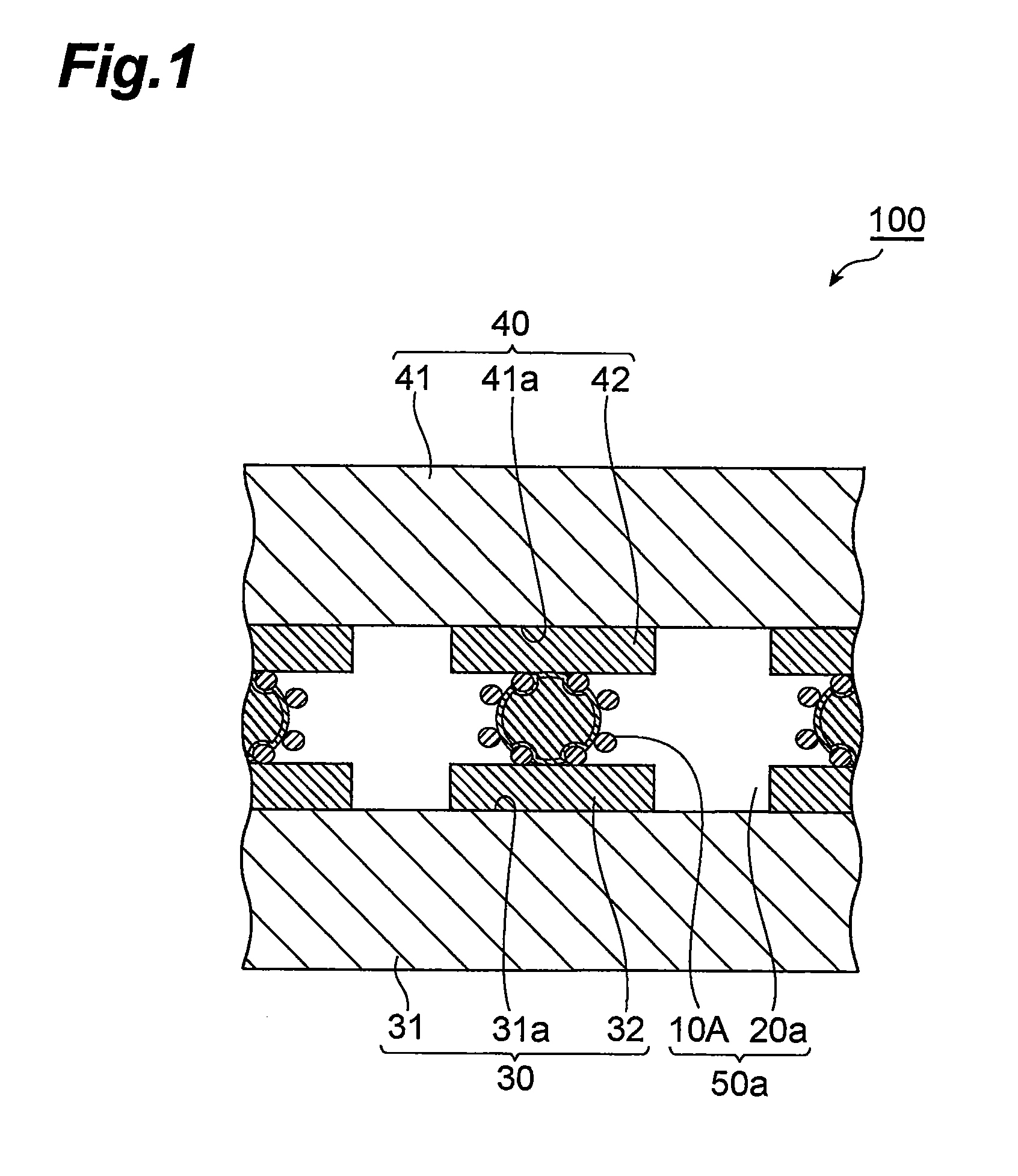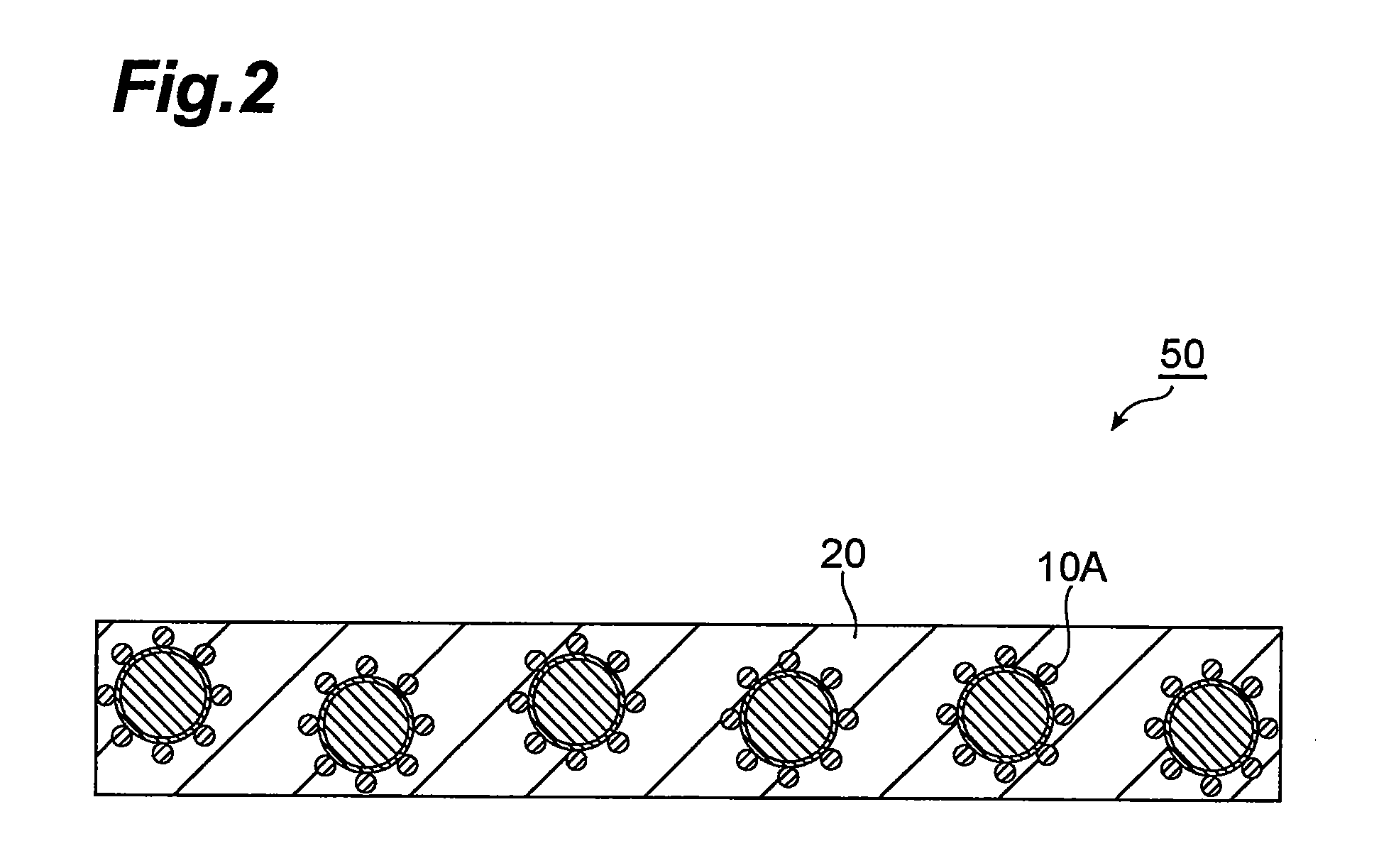Conductive particle, adhesive composition, circuit-connecting material, circuit-connecting structure, and method for connection of circuit member
a technology of adhesive composition and circuit, which is applied in the direction of non-metal conductors, conductors, organic conductors, etc., can solve the problems of high resistance value at the connected section and insufficient insulation between adjacent circuit electrodes, so as to inhibit the increase in resistance value and low initial resistance value
- Summary
- Abstract
- Description
- Claims
- Application Information
AI Technical Summary
Benefits of technology
Problems solved by technology
Method used
Image
Examples
example 1
[0120]Conductive nucleus particles were produced in the following manner. Specifically, crosslinked polystyrene particles were prepared as base material particles (SX Series, trade name of Soken Chemical & Engineering Co., Ltd., mean particle size: 4 μm), and a Ni layer (0.08 μm thickness) was formed by electroless plating treatment on the surfaces of the particles. Also, an Au layer (0.03 μm thickness) was formed on the outside of the Ni layer by electroless plating treatment, to obtain nucleus particles having a conductive layer composed of a Ni layer and Au layer.
[0121]A crosslinked acrylic resin (MP Series, trade name of Soken Chemical & Engineering Co., Ltd., crosslinking degree: 20%, gel fraction: 18%) was prepared as an organic high molecular compound (insulating coating) to cover the surface of the nucleus particles. There were introduced into a hybridizer (NHS Series, trade name of Nara Machinery Co., Ltd.) 4 g of the crosslinked acrylic resin and 20 g of nucleus particles,...
example 2
[0137]Conductive particles, a circuit-connecting material and a connection structure were produced in the same manner as Example 1, except that a crosslinked acrylic resin with a crosslinking degree of 10% (MP Series, trade name of Soken Chemical & Engineering Co., Ltd., gel fraction: 8%) was used instead of the crosslinked acrylic resin with a crosslinking degree of 20%. The conductive particle coverage factor was 25%.
example 3
[0138]Conductive particles, a circuit-connecting material and a connection structure were produced in the same manner as Example 1, except that the insulating coating was formed on the surface of the nucleus particles in the following manner.
[0139]Specifically, the same type of nucleus particles as produced in Example 1 and a crosslinked acrylic resin (MP Series, trade name of Soken Chemical & Engineering Co., Ltd., crosslinking degree: 10%, gel fraction: 8%) were introduced into a hybridizer, and conductive particles were formed having the structure shown in FIG. 3. The conditions for the hybridizer were a rotational speed of 16000 / min and a reaction tank temperature of 60° C. The conductive particle coverage factor was 30%.
PUM
 Login to View More
Login to View More Abstract
Description
Claims
Application Information
 Login to View More
Login to View More - R&D
- Intellectual Property
- Life Sciences
- Materials
- Tech Scout
- Unparalleled Data Quality
- Higher Quality Content
- 60% Fewer Hallucinations
Browse by: Latest US Patents, China's latest patents, Technical Efficacy Thesaurus, Application Domain, Technology Topic, Popular Technical Reports.
© 2025 PatSnap. All rights reserved.Legal|Privacy policy|Modern Slavery Act Transparency Statement|Sitemap|About US| Contact US: help@patsnap.com



